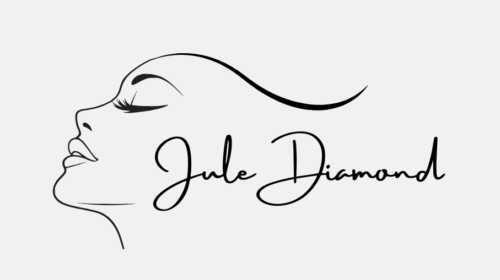The Supplements, Sleep Habits & Sprinting Ritual That’s Healing My Hormones, Fatigue & Fog
“I was exhausted, foggy, and inflamed. I had Hashimoto’s, Epstein-Barr, Osteopenia… and menopause was quietly adding fuel to the fire.”
This is my current reset protocol, not generic advice.
I’ve been there — and now I’m rebuilding.
Section 1: Why Midlife Fatigue Is Not Just ‘Getting Older’
- Hormone shifts (estrogen, progesterone, thyroid)
- Chronic inflammation from autoimmunity (Hashimoto’s, EBV)
- Cortisol dysregulation from everyday stress
- Lack of deep, restorative sleep and lymph stagnation
- A previous lack of knowledge about truly healthful nutrition
“This isn’t aging. This is a system crying out for reset.”
Honestly, I don’t think my story is unusual for women in midlife. In fact:
Autoimmune conditions are surprisingly common, especially among women. Studies show that around 80% of all autoimmune patients are female, and these conditions affect at least 1 in 10 women in Western populations. The prevalence increases with age, particularly around perimenopause and menopause.
I believe this ties to how our food and environments have changed dramatically over the years — changes that have impacted our bodies, often without us even realizing it. This may explain the rise of so many ailments that weren’t nearly as common even 10–15 years ago.
Section 2: Supplements That Are Giving Me My Life Back
- Magnesium mix – for sleep, anxiety, and bone health
- K2 + D3, Zinc – for osteopenia, calcium regulation, and immune health
- Omega-3 fatty acids – heart health, cognition, reducing inflammation
- Collagen, Taurine, Astaxanthin + Vitamin C – skin and bones
- CoQ10 or PQQ – mitochondrial energy
- Multivitamin for over 50s, B-complex – methylation support for Hashimoto’s
- Rhodiola or Ashwagandha – adaptogens for adrenal health
- Selenium – thyroid support
- DHEA – hormonal support
- Quercetin – histamine intolerance
- Boswellia – joint health and mobility
- Melatonin – improving sleep, boosting immunity, antioxidant support
Always consult your practitioner before starting any supplement protocol.
Peptides – I rotate peptides on and off throughout the year. These have helped me enormously improve my health. You can read more about peptides on my blog about them.
DISCLAIMER
The content shared on this website and in these videos is for informational and educational purposes only. I am not a licensed medical professional.
These are my personal experiences and opinions related to DIY skincare, peptide use, and wellness routines.
You are solely responsible for your own health decisions. Always do your own research and consult with a qualified professional before trying any new treatments, protocols, or products.
Section 3: Sleep Recovery Is Non-Negotiable
What’s helped me:
- Magnesium, glycine
- No screens late at night (though honestly, I don’t always honor this!)
- I’m an advocate for melatonin supplementation at night.
No, your body doesn’t “get used to it” and stop producing it — in fact, our melatonin declines significantly after age 40. Prioritizing quality sleep is non-negotiable for healing, happiness, and longevity.
Menopause disrupts sleep (night sweats, cortisol spikes), so I’m on HRT.
“Once I made sleep a sacred ritual, everything began to shift.”
You can go months or even years thinking you’re getting enough sleep — especially during menopause, when it’s confusing to know what’s truly restorative. Sleep is also a sensitive topic; people defend their habits, yet both men and women face growing sleep issues as they age.
Modern life — with its stress, pressures, and intrusive light and noise — makes good sleep harder to come by. But deciding to prioritize it can transform your health. Deep REM sleep isn’t just for energy; it’s key to anti-aging and longevity.
If melatonin helps you achieve it, use it. It’s well worth it.
Section 4: Sprinting Over Slogging — Why I Train in Intervals Now
Why long cardio drained me:
Long-distance running or cardio during perimenopause raises cortisol unnecessarily. It also releases lactic acid, which, over time, accelerates aging. Yes, it burns fat, but it can also age you faster — just look at the faces of long-term distance runners.
I’ve never run or done spin classes for more than 20 minutes at a time. I prefer sprint training or fast-paced walking at Zone 2 for longer periods.
The benefits of short, high-intensity training:
- Rebounding, sprints on the beach, or bike bursts
- Still improves cardio health
- Shown to be more beneficial for older adults
- Time-saving and hormone-friendly
Bone strength benefits for osteopenia:
Any weight resistance helps: heavy bags, weighted vests, jumping — these all provide resistance against gravity, strengthening bones.
Start small:
- 10 minutes barefoot, music on, rebounding
- Rebounding is joint-friendly
- If no rebounder: try skipping, or jumping in a pool to begin with
Build up to impact exercises. Impact strengthens bones. Rubber sole shoes and mats help cushion joints.
Section 5: My Daily Ritual Stack (That I Stick To)
Morning:
Hydralyte water mix with salt, magnesium, potassium. Followed an hour later by bulletproof coffee — organic coffee with a dob of grass-fed, unsalted butter blended in.
Butter contains butyric acid, which boosts energy, supports intermittent fasting, aids digestion, calms inflammation, and supports overall health.
Mid-morning to afternoon:
- Sprinting or rebounding
Afternoon:
- Protein + collagen smoothie
Evening:
- Magnesium
- Red light therapy (alternating with natural sun exposure)
I aim for 15 minutes of natural sun daily, early morning or late afternoon.
I use red light therapy 3–4 times per week to ease muscle and joint stiffness, reduce pain, and support skin rejuvenation. It encourages mitochondrial production — without new mitochondria, the body slowly breaks down. That’s aging. Red light therapy helps slow that down.
Download my free Energy Reset Ritual Tracker
